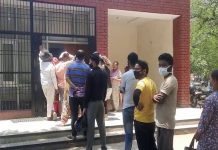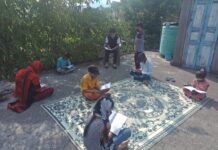KATRA, JUNE 18 – The Siar Dabri-Bhawan Material Ropeway, which has been installed by Shri Mata Vaishno Devi Shrine Board at a cost of Rs. 12 crore, is facilitating quick and eco-friendly transportation of prasad and various other items and materials from Katra to Bhawan and on the return journey to Katra the wagons carry scrap and other items. This is the first ever Material Ropeway of its kind installed in the State.
It is pertinent to recall that this Material Ropeway, along with the newly constructed Tarakote Marg between Katra and Adhkuwari, was formally inaugurated by the Hon’ble Prime Minister on 19 May 2018.
The operation of this Material Ropeway has enabled hassle-free transportation of construction and varied other materials from Siar Dabri to the Shrine. This system, which has a carrying capacity of 5000 kg of materials per hour, will help to significantly decongest the existing track by reducing the logistics of ferrying materials, food stuffs etc. on the Yatra tracks. The decongestion of the tracks shall significantly enhance the convenience of pilgrims.
Governor N. N. Vohra, Chairman of the Shri Mata Vaishno Devi Shrine Board, who has been personally monitoring the implementation of the Shrine Board’s infrastructure development projects, directed CEO to ensure the maximum possible utilization of the Material Ropeway, as per the Standard Operating Procedure (SOP), for the better management of the pilgrimage.
Very shortly, when the Ropeway will run to its full capacity, it is expected to transport goods and materials for catering to the requirements of the various users at the Shrine and in the adjoining areas. It will also facilitate the various Service Providers which operate in the Shrine area by carrying their materials at a reasonable rate.
Further, as part of Central Store decongestion plan at Banganga, a Sub-Store has been established at Siar Dabri near the Material Ropeway Starting Point which would significantly augment the storage buffer capacity.
The entire system, which is electrically operated, will help in preserving the fragile eco-system of Trikuta Hills, besides very significantly reducing the number of goods/ materials carrying mules on the track to the Shrine.









































